Canon EOS C300 – Review & short film
Check out our C300 test short “13:59” above.
Here’s the new great BTS from Peter Hainzl. Thanks so much!
… and here’s another NEW behind-the-scenes video from Patrick Zadrobilek, thanks again!
Big thanks to our actors Karim Ismael Rahoma and Mirjam Birkl, and the entire crew. It was a fun shoot but a lot of stress! Great to make something like this in virtually no time, great job everyone. The music was composed within less than a day by the extremely talented Cedric Conti, who already contributed the music to Philip Bloom’s INSIPIENS (or “Nino”), which we shot after our Masterclass in Majorca this past June (click here). Thanks so much Cedric! Check out his work here.
An ungraded version of the entire film will be made available for download shortly as well. We shot everything in Canon Log mode. We will post clips from the film detailing ISO values and lens data of various shots in the coming days.
Sometimes you just have to grab a chance when it’s in front of you: Both my friend Mario Feil and I were on Canon’s list as testers for the new C300. Until now, only a handful of people were able to use this camera outside of Canon’s press events where they presented it.
Mario, based in Germany, called Canon directly … And was offered to test the camera immediately. Wow! He wanted to come to Vienna recently anyway, so I convinced him to come to Vienna over the weekend to shoot a little short, taking the C300 through its paces.
We have to point out that we received a preproduction unit of the C300 from Canon. Final details about the camera as well as the firmware can be changed until the camera ships in January 2012.
And that we did … Mario had the basic idea for a script and together, we developed it further. He directed “13:59” and I was DoP. We brainstormed a lot of diverse locations in Vienna, I organised some enthusiastic actors via the quite popular “Filmmakers Austria” Facebook group (with almost 2300 very active members), asked some filmmaker friends for help with BTS, and also got my friend and seasoned cameraman Alexander Boboschewski (aka Bobo) as Steadicam operator on board for the test. He brought Alois Kozar Jr. on board, a great 1st AC who is used to pulling accurate focus day in and day out.
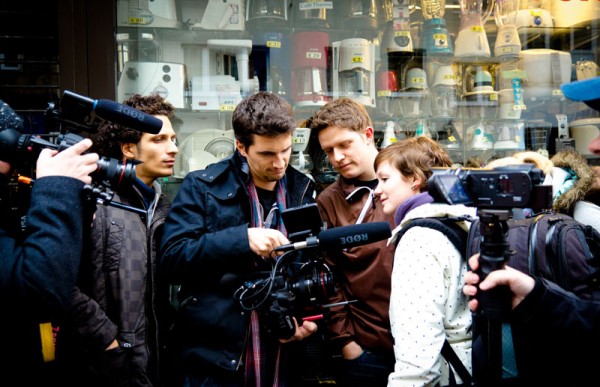
Our actor Karim, me and Mario reviewing shots from the tram shoot – in the rain! (photo by Dan Taylor)
Mario and I wanted to do something narrative as opposed to a mere “camera test” with an assembly of unrelated shots for two reasons: for one, we are bored by it … We have done it ourselves before (e.g. I did it with February, the first ever short shot on the then-new Canon 550D, click here). For another, a real narrative shoot forces you to deal with real production issues. The camera is not the centre of attention nor should it be. Sounds weird for a camera test? Maybe … But this is as close to a real-life production as possible.
It’s definitely a bold move … Using a camera you have never ever used for a proper production is not something I would ever recommend for any paid jobs. In this case, I wanted to know if the C300 can be as intuitive and straightforward in use as a Canon 5D Mark II or 7D.
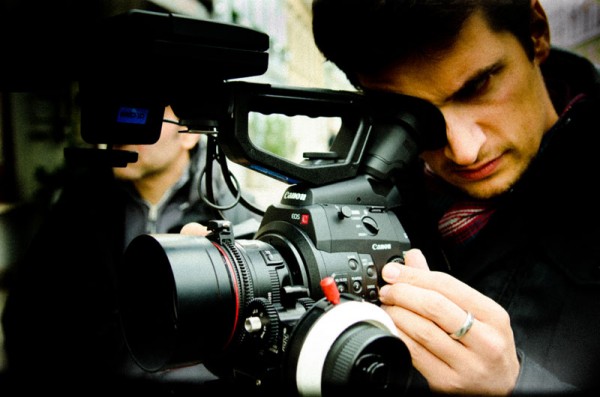
No, I didn’t want to give it back to Canon 🙂 … here with the excellent ARRI Mini Follow Focus (photo by Dan Taylor)
Ergonomics, built quality
What can I say … It was an absolute pleasure to work with, could hardly have been any better. We took the thing out of the box, fiddled with it for 5 minutes and were ready to go. Try that with a Red Scarlet or Sony FS100! Both are really great cameras in their own rights, but there is no way you can use them without seriously getting to know all the buttons and functions first. Not so with the C300 – from the first time you hold in your hands you realise here is a camera company who actually talked a lot to filmmakers when designing it and that resulted in a very natural and ergonomic device. (E.g.: take only the fact that there are 4 record buttons on this small camera body, and a lot of assignable buttons for all sorts of functions …)
When I saw the C300 for the first time I wasn’t quite sure what to think of it … It looked similar to an FS100 at first sight, with the monitor on top … But the similarities end there. One fundamental flaw of the FS100 is the fact that the monitor on top can only be tilted … Not rotated or moved in any other way. So if you want to do a high angle shot you’re basically screwed as there is no way you can see the image if you are lower than the camera itself. You are forced to use an additional EVF like the quite excellent Zacuto EVF or a field monitor.
The monitor that comes with the C300 can be mounted on top, but elsewhere as well – also, it is fully rotatable, which turned out to be essential for our workflow. Would an external monitor for the 1st AC be better to pull focus? Undoubtedly, but it turned out that it worked like a treat with the basic setup as well. The quality and resolution of both the monitor as well as the viewfinder on the back is superb. As a DP / camera operator you can use the viewfinder while the 1st AC uses the monitor. Alois also found the peaking function to be extremely helpful and precise for focusing … We used red peaking.
You might say that a small camera is not necessarily a good thing as quite often that means you have to rig it up quite a bit to make it usable handheld (or simply to impress clients … Which is a dumb reason, but yes, it has to be done for some of them indeed …). The C300 can be used handheld without a rig – it actually works quite well if you rest your left hand below the base plate while holding it on the rotatable grip in your right hand, that really surprised me. It’s a Hasselblad style of working. The small form factor and low weight make this possible, even if a Canon L 70-200mm IS II lens is attached. Having said that, this works for shorter periods … And if you don’t have permissions to shoot in a tram (like us) and need to be as unconspiciuous as possible 🙂
But for longer handheld shots, you are always better off with a proper rig, and we needed that as all the shots except for a few effect shots and some 300mm shots were shot handheld. Why? Rolling shutter test! Some of the shots we did would wobble like crazy, disintegrate even, if shot on a 5D. The C300 sensor (it’s Super35mm size) is VERY well designed for video when it comes to rolling shutter, never have I seen less of it in a CMOS based camera (except for the Alexa, but that’s a whole different league entirely). Many of the tram shots were shot with the Canon L 24-70mm f/2.8, a great standard zoom lens, but it has one flaw – there is no IS. However, even without the rig, we were able to get decent shots with it on the C300, and there is no sign of wobble anywhere, even when there was a lot of vibration while riding the tram.
So regarding the rig … Canon was smart enough to show the prototype of the C300 to several accessory manufacturers, so they had their stuff ready on the day it was announced. A smart move for all involved parties as there is no waiting period for proper rigs when this camera hits the market in January, as there was for quite a while when video DSLRs popped up for the first time and nobody really knew what to do with them in the beginning.
To cut a long story short, ARRI got in touch with us shortly before the shoot and loaned us a full rig including their custom C300 plate, rods, shoulder pad, follow focus and matte box for the test shoot. A great set-up that helped us a lot.
The new ARRI Mini Follow Focus turned out to be exceptional for use with Canon EF lenses. As you know those are stills lenses and hardly any of them offer hard stops on either end. That makes them incredibly tough to use with many follow focuses, as most of them are still designed for proper cinema lenses that actually can be turned beyond their infinity or macro limit. The ARRI Mini Follow Focus even has two hard stops, so you can simply define those limits and off you go … There is no difference between cinema and photo lenses any more regarding the limits when you use this follow focus.
When you compare the body of the C300 to an F3 you realise that this is a very different camera, although they play in a similar price league. The C300 is less than half as big and much lighter.
For the F3, Sony took a very traditional camcorder design and dmply applied it to a S35mm sensor. It can be compared to the form factor of an EX1 or HVX200. Internally, it works just like an EX1/3, same codec, menu structure, etc.
The Canon C300 on the other hand clearly borrows many traits from DSLRs that a lot of cinematographers like me have grown to love over the past few years, while at the same time putting in all the bells and whistles of traditional camcorders that we were missing from DSLRs. In many ways it is a great fusion of “the best of both worlds” and one of the first cameras that dares to be different (although I guess the Epic and the FS100 can also be counted in that category). You can actually see that Canon’s DSLR and camcorder divisions were working closely together to make the C300 a reality, and they succeeded in many ways.
The grip handle on the right is very sturdy and gives a nice and confident feel when you hold the camera in your right hand only. It’s adjustable, but unfortunately a ring has to be unfastened to adjust it, and that is simply a little to much hassle sometimes if you want to grab a quick shot from a different angle. The best way of adjusting a side handle that I have used so far is on the Sony EX3 (and EX1 I believe), where you simply push a button and turn it to the position you need. Very quick and very simple. The handle on the Sony NEX-FS100 on the other hand feels much more flimsy and I actually feared that it might fall of when a heavy lens is attached to the camera (not to mention the terrible, terrible cable that goes out of the side handle and has to be connected at the back of the camera, always getting in your way …). Anyway, the one on the C300 is a sturdy handle but there is definitely room for improvement for the next model.
We were always shooting with the monitor package on top, that can either be attached directly to the camera or with the handle in between. Part of this package are the two XLR ports with all the audio settings right below the monitor. The entire package is connected to the camera via two wires that can easily be attached, with one carrying the image signal to the monitor and the other one carrying audio.
Having this in a separate unit that can be detached means that if need be, you can even shoot more minimalistic without any monitor or audio. If you take the entire thing off, the camera looks even more like a DSLR.
The built quality of the C300 is superb, it feels just like a 5D Mark II when you hold it in your hands – the entire front part of the camera is built of magnesium and the mount can take even the heaviest lenses. While it’s probably not very advisable to do for a long period, we even put a Canon 300mm f/2.8 L lens on it and still mounted the whole thing on the camera body rather than the lens itself, and it still felt very sturdy.
All the ports on the C300 are protected by rubber covers. While the protection is for sure a good thing for the ports, the way they are attached to the camera is a bit flimsy … If you use the XLR ports for example, the protection covers tangle down on the side, and I think they won’t be there for a long time … There is also a lid that covers the battery, but only if you use a small battery (like the one supplied with the camera). We of course had to buy a second one and bought one with a higher capacity, and it was too big to be protected by the lid – so you have the choice of simply leaving the lid open or taking it off entirely (which is a good idea anyway if you ask me, because I think it’s a part that is easily lost).
Just for pro’s
One thing you must be aware of is the fact that the C300 has no internal microphone whatsoever. This is of course a controversial decision – it means that you will simply record no audio if you don’t attach an optional microphone. I personally think it was made because most Canon IS lenses are noisy … You can actually hear when they are stabilising while shooting, which is also audible via internal microphones. If you have ever used the internal audio recorded by a DSLR you know what I mean.
You simply must use this camera with a top microphone, in our case I attached my excellent Rode NTG-3 on top, and for the other audio we used a wireless lav microphone. The NTG-3 is a passive microphone that needs phantom power – no problem at all, the C300 has optional phantom power via XLR built in like any other proper camcorder.
I have currently working someone on an edit of a corporate film that I shot with a DSLR, and it’s 4.5 hours of short bits of talking heads where we recorded the audio separately. It’s an absolute nightmare to sync even using Pluraleyes, even while it’s an essential and extremely helpful piece of software, external sound recording is just a pain that produces a lot of work in post production especially if there are many takes. Internal sound recording is something we have always had with every camcorder, but DSLRs forced us to do it differently … And now it’s back, and I really can’t imagine doing it differently again after using the C300 for a while. Syncing in post is a pain!! (And so is converting footage in order to be able to edit … but that is a whole other story …)
It’s also noteworthy that the C300 has absolutely no auto functions – no autofocus, no automatic audio levelling, no auto iris, no automatic anything. It’s definitely a bold move that excludes amateurs from the start (and so does the price, certainly), but I think it is the right way to do it. Too many auto functions would have meant more compromises in different functions and as a professional you adjust everything manually anyway. It’s however ironic that RED Epics and Scarlets with EF mount now offer better autofocus with Canon lenses while the new new Canon camera doesn’t … Oh well.
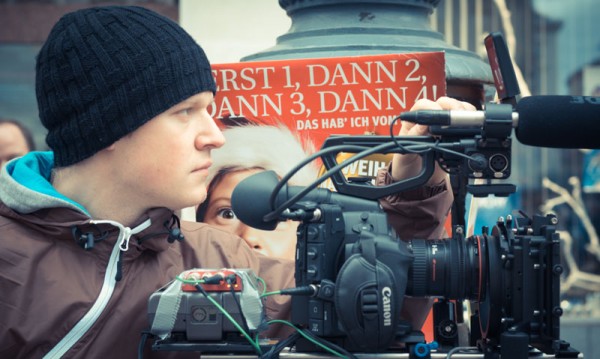
Mario Feil with the Canon C300 … yeah I let him use it from time to time to keep the director happy 😉 (photo by Dan Taylor)
Image quality
Of course this is the part most people have been waiting for …
All video shooters using Canon DSLRs fell in love with the look of the image these cameras deliver. Especially the 5D Mark II’s image has a quality to it that no other camera has yet quite achieved in my opinion. It’s a very distinct look and people have striven to get most out of it with picture styles that are as flat as possible, giving a bigger range for colour grading in post production – Technicolor CineStyle, Marvel, the normal “flat” look pioneered by Stu Maschwitz and so on …
Picture profiles where just one way of reducing the shortcomings of Canon DSLRs’ video mode. The biggest drawbacks are moiré and aliasing, artifacts that occur due to the “quick and dirty” way of how the sensors in the DSLRs are read out, using so-called “line-skipping” where only every third line or so is read out on the sensor to interpolate an HD video image from (click here for a blog post that explains how it works). (The upcoming Canon 1DX is the first Canon DSLR that actually downscales / debayers the video image).
What can I say, I think it’s non-existent in the Canon C300. We weren’t able to spot a trace of aliasing or moiré in any of the video we recorded, and we often intentionally pointed the camera at objects that are notoriously prone to these artifacts.
It’s especially noteworthy that the image out of the C300 is tack sharp – look at fine detail like hair at full resolution and you will see just how detailed it really is. It’s quite clear there’s a 4K sensor working internally which clearly results in much more detailed images. Due to interpolation video images from Canon DSLRs never were really sharp if you compared them to images from any other true Full HD camcorder. We still found the image sexy, but it was far from perfect. It’s hugely better now, because this is clearly a sensor that was designed to shoot video.
The C300 is rated at ISO 850, that’s the native ISO value. Therefore, this mode gives you least grain. ISO is supposed to be an absolute value, after all it stands for “International Standardization Organization” … however, we found out that 6400 ISO on the Canon 1D4, the “queen of the night” so far, equals 20,000 ISO on the C300. Mario will upload some examples shortly and I’ll post them here.
The Canon C300 is incredibly light sensitive. We shot many scenes in pitch black night, and we sometimes couldn’t see our hands in front of our faces, and the camera was still able to pick up detail. It goes up to a whopping 20,000 ISO … Of course this is quite grainy, but nothing you couldn’t get away with for a professional production. The grain in Canon DSLRs used to be incredibly colourful, which was extremely unpleasant and made the image look very electronic (as opposed to Nikon DSLRs, which have many downsides as video DSLRs, but they are much better in low light than current Canon DSLRs and their grain is more pleasant as well).
This was shot on an iPhone by Mario when we were shooting in the middle of the night at the oil refinery … here you can actually see that we actually saw … nothing. But the C300 did!
All of the long shots at the refinery with the fog and the lights in the background were shot at 20,000 ISO on the C300, as was the shot on the mountain looking down on the city of Vienna (with a ribbon of fog covering the city). I tried this EXACT same shot in February of 2010, when I shot the 550D short film up there with an f/1.4 lens. It was simply not possible to get half-decent exposure, even at ISO 1600 (the barely acceptable maximum for Canon DSLRs in video mode) and wide open. This time, it was no problem, I could even stop the iris down a little to get a little more depth of field.
We had an F3 as well, but due to lack of time as well as lack of the S-Log firmware on the F3 we were not able to put the two side-by-side in the same lighting conditions and with the same lenses. I expect the low-light race to be pretty close, but this is for somebody else to test once they get a chance to shoot with the C300. (Philip?)
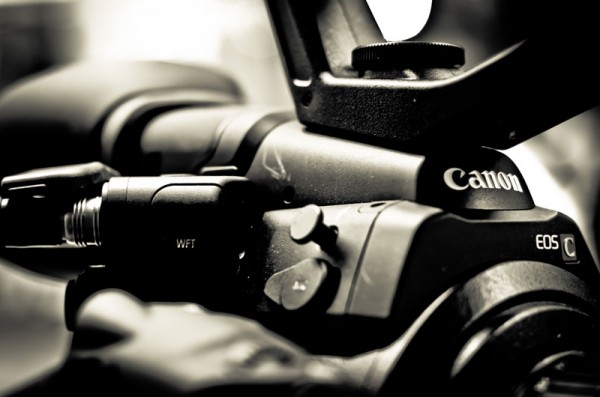
The WFT connector is for the supplied wireless transmitter – you can control the camera remotely, but we didn’t have a chance to try it out … (photo by Dan Taylor)
We shot the entire film “13:59” in Canon Log mode. It’s Canon’s new log format that gives you a lot of latitude to play with in post. I you have a Sony F3 you can optionally purchase the S-Log firmware upgrade which costs about $3,200. It’s a lot of dough for a piece of software (though it comes with a 32GB SxS card), but it makes the F3 to what many have dubbed a “Mini Alexa”. The comparison between the low light sensitivity of the two cameras with and without the S-Log feature in the F3 will be something very interesting to see, but keep in mind that it’s an unfair comparison as the S-Log is an optional purchase for the F3 which makes the camera much more expensive than the C300. S-Log – if recorded onto an optional external recorder – is definitely of a higher quality for the following reason:
The F3 has one big advantage over the C300: it gives a you the ability to get a 4:4:4 10bit signal out of the dual SDI port, enabling you to record it even uncompressed (if that’s your thing) with a recorder like the AJA KiPro or KiPro Mini. Again, another expensive additional purchase that has to be considered, but the ability to have this function is amazing, especially because 10bit gives you much more to play with in colour grading.
With the C300, you get only an 8bit 4:2:2 image out of the SDI. The reason behind this that I heard from somebody close to Canon is the new processor they are using, the DIGIC DV III, which is not capable of 10bit output. According to Canon though, the differences are negligible, but that is something that has to be proven by a colourist working with footage from both cameras – I’ll update the blog once we hear back from ours.
But, as mentioned above, the F3 is internally really an EX3, and it uses the same internal recording onto SxS cards in the XDCAM EX format, at 35 Mbit/s in a 4:2:0 colour space. I love the format and still shoot very often broadcast stuff with my 3-year-old EX3, but to be honest, the standard is quite obsolete now and there are much more efficient codecs. The fact that Sony put such a relatively weak codec into a quite expensive camera that is capable of so much more was a big disappointment for me.
Canon on the other hand developed a completely new codec with a 4:2:2 colour space and 50Mbit/s that was first used in their XF300/305 camcorders. That was surprising as they are small-chip camcorders and as such, they usually get much weaker codecs built inside – but it probably was a testing ground for Canon to get the format known and accepted by broadcasters before they put it into the C300. It’s a great codec that just fits a lot of broadcaster’s needs – for example, the BBC rarely accepts anything less than 50Mbit/s for broadcast, and it has to be 4:2:2.
The Canon C300 features something else that we are missing from DSLRs (and even the FS100): ND filters! 3 different intensities at 2, 4 or 6 stops (plus 0). They can be switched in and out using a button rather than a mechanical switch, which is great, because they don’t get stuck. (But yes, the camera internally switches them mechanically, but it’s an triggered through an electronic button mechanism rather than a real mechanical switch as with virtually all other cameras – which also saves space inside the camera body, because they don’t have to rotate.)
Image-wise, last but not least, rolling shutter is absolutely minimised. Of course it is there as it is with every single CMOS-based camera, but it is negligible and won’t be a problem in 99.9% of shooting situations. Heck, we even shot a tram at 50km/h going through the frame, and while that thing looked like a rocket the last time I shot it even with an EX3 (not to mention a 5D Mark II), the issue was much less apparent in the C300. It’s clear the sensor is read out much faster than the ones you find inside DSLRs. As mentioned above, we shot only run-and-gone style, 95% handheld, and there was never a trace of CMOS wobble or rolling shutter.
Conclusion
The Canon C300 has much to love, and very little not to like. Its biggest downside is clearly the lack of 10bit output, but I can count on one hands the times that I have really needed that.
Canon fulfilled most of my wishes here:
– small form factor, light
– no aliasing or moiré
– increased light sensitivity
– EF lenses on a proper camcorder, without the need of expensive adapters
– 4:2:2 50MBit codec
– proper batteries (they last FOREVER, we got almost 5 hours out of one of the big ones
I have already decided that this will be my future camera … it fits most of the jobs that I do and it ticks more boxes on my list than any other camera before.
I will update this blog continuously with the short film as well as details about colour grading of the footage. Thanks to the great and dedicated cast & crew of this short film … it’s so amazing we could make this happen within no time (and within a very short shooting time!).
Here are Alexander Boboschewski’s (aka Bobo’s) thoughts on the C300 – he was our Steadicam operator and as usual the most experienced guy and good soul on set:
Last weekend we ad the chance to play around with the new Canon C300 pre-production model. It was quite easy to start working with that camera also without having a manual for it. First impression was very good, everything is where you want to find. Surprising we also found some ND filters.
On the downside there is the over cranking limitations to 50 pictures and no 4:4:4 uncompressed signal to external recorders. The HD-SDI port is limited to 1080 4:2:2 8bit.
But I think for 90% of our projects that is not really a limitation.
The camera body itself looks and feels better than I expected from the pictures. The camera is quite good balanced in your hand. The Handgrip is nice and the monitor that you can flip in different angels is brilliant. My Focus puller could use it for his work.
I wasn’t sure if the cables from the monitor to the Body is such a good idea but after this weekend I must say they are right. With the cable connection you can put the monitor also on other places within the reach of the cables – not bad. Professional XLR connectors for sound are also on board. The minimizing of the rolling shutter is nice and the high ISO for shooting video at night is great.
At the bottom is the Battery door, which can be closed when using standard batteries or removed if using Canons larger batteries. So this will be the first part besides the connector covers you will loose.
I also tried the C300 on my Steadicam and of course the camera has too less weight. But with some accessories you can manage it. I had some problems with the HD-SDI output in combination with my down converter but I used the onboard monitor and it worked well the monitor has also a good viewing angle.
In the manual I got today I found out, that for SD Video signal you can use the SYNC OUT Terminal So you have different options to get a Video signal out (HDMI, HD/SD-SDI and SD composite)
I think with the Canon C300 we will get a nice camera for our daily work.
>
UPDATE – 1D Mark IV / F3 / C300 side-by-side
Mario did a short video comparing the three cameras side-by-side. It’s very interesting how incredibly soft the image from a DSLR is when compared directly to the image from an F3 or C300!
Stu Maschwitz, a true legend in the post production area, developer of Magic Bullet Looks and Colorista, author of “The DV Rebel’s Guide”, VFX supervisor for countless Hollywood films (check out his IMDB page), and author of the excellent prolost.com blog, incredibly wanted to have a go on our Canon C300 footage to do a grading test, and of course we let him!! He’s that kind of person you listen to when they say they know how to do something 🙂
Check out what he came up with – I love the grade of that interior tram shot, he managed to pull the face out of the slight underexposure, and managed to get rid of that unhealthy yellow tint in people’s faces (the lighting inside those old trams is horrible):
Now we need to find a way to bribe him into grading the entire film 😉
Micha Schmidt, a professional editor from Germany, also had a look at the MXF files and played with them in post with grading, just to see how far you can push them. That’s what he came up with – I am particularly impressed by the night shots in the end, the coloured look works really, really great and the grain is absolutely acceptable – even without any noise reduction.
Micha writes:
the first scene i protected quite “usual” just a lil push here and there … skin tones, contrast, richer colors… stuff like that… i “protected” highlights in the back window tho’
all the rest – especially in terms of high ISO performance – i did push much more – to see what is possible … and there is a lot of “play-room” for a grade … the grain / noise still looks very organic / filmic (almost like 16mm) even at the limits of what is possible.
even a hard color push / tint is no real issues if you watch your blacks … kinda awesome!
and at no point there was any artifacts you are probably familiar with from DSLR h264 or even XDCamEX or AVCHD stuff … that is really nice!!!
over all … great footage to work on!
UPDATE: Low-light comparison of C300 C-Log and F3 S-Log:
My buddy Sebastian Wiegärtner currently got the C300 loaner from Canon and did a little low light comparison video between the C300 and the F3. It’s interesting to see footage from the two side-by-side for the first time.
The F3 footage looks brighter at the same ISO values, but that is certainly simply because of the fact that S-Log is “flatter” than C-Log – also, he used an external recorder (KiPro Mini). Don’t forget if you add the extra price for S-Log ($3.200) and an external SDI recorder to the equation, the F3 costs you considerably more than the C300 – so differences in quality are to be expected! Nevertheless, still a little of a downer that the C300 doesn’t output 10Bit over SDI …
UPDATE: “When you find me” – Ron Howard-produced short film now on YouTube
Canon hired Ron Howard to produce a short film with a prototype of the Canon C300, and it turned out quite lovely – beautifully executed by his daughter, director Bryce Dallas Howard (who you should also as actress in the quite brilliant “The Help“, a tale of courage during the times of the Civil Rights Movement in the States).
Be sure to watch it in HD:
Of all the Canon-commissioned C300 shorts, for me this is the best one, really nailing it with its story and production value. And of course – the C300 performed beautifully, and proves that it truly is capable of cinema quality images with hardly any compromises.
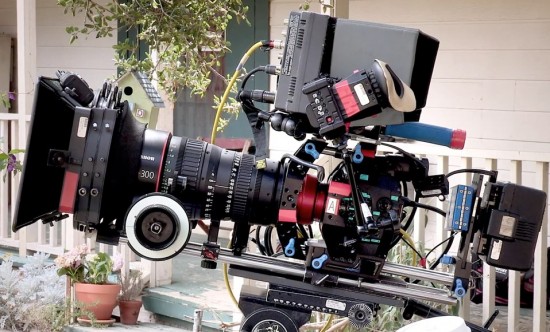
Canon C300 on set of WHEN YOU FIND ME – with a Zacuto EVF! And the new Canon Cinema Lenses – was not yet available to test for us, unfortunately
You have to check out the Behind-the-scenes video as well – they don’t talk about the camera until the 7 minute mark or so, but it’s well worth the watch. Be sure not to watch it until after you have seen the short. Interesting is also that a 5D Mark II was used for a helicopter drone shot (of the white tree – the final shot I believe).
It’s also interesting to see that they used the camera with the Zacuto EVF (and a Redrock cage). The internal EVF of the C300 is great and very sharp, I loved it when we shot with it two weeks ago – but I will be using it with the Zacuto EVF as well simply due to ergonomics when going handheld. When you build up a shoulder rig you don’t want to have the entire camera in front of your face, rather just the EVF on the side – that’s where the Zacuto EVF comes in handy again (check out my full review of it right here).
I will likely be shooting a narrative short film of about the same length in February 2012, and currently I think I will shoot it on the C300 which I should get by the end of January. More details on that a bit later.
And in case you are interested in the C300, drop me an email, I know a reseller in Europe who is taking preorders and offers a SIGNIFICANT discount with a discount code currently – I only can’t share it publicly.
B&H Photo also started taking orders for the C300. I know for a fact that Canon won’t be able to satisfy demand, because these resellers already know they will receive significantly less units than they ordered. So if you want one soon, I would get in line now!
-
Excellent review, Nino! I would love to get my hands on a C300! Sadly, it’s a tad expensive. Can’t wait to see you and Mario’s short film!
-
Thank you Nino you did a Great Job!!!!!
-
Great Review Nino. This camera looks great, not sure about the price tag though.
Does Mario come with the camera? -
I am dying here to see the short film. I am wondering if that camera would be an option for our project? 😉
-
Mammoth post, Nino! Great review, sounds like a marvellous piece of Japanese engineering. I’ll never be able to afford one at he current price point, but I guess renting one for a while would be possible if it’s that intuitive to learn…would it be as intuitive to someone who has only shot on dslrs
-
Great review. Looking forward to seeing the footage. Pretty certain I will buy the C300 – especially after reading this.
-
Oops, that wasn’t meant to be posted yet!
…so yeah, DSLR folk would probably have a harder time with this, being manual in every way. Would that mean that a this camera would be pretty much unusable for a team of one? Would you need Austrian girls with tape measures to get the most out of it is really what I’m saying 😉
-
I’m surprised you had trouble with the FS100 picking it up and shooting with it as I found it was far more familiar than a DSLR ever had been. No mention of the 720 50p which has been such a help with the FS100. So much to admire about the c300 but there’s a few key features missing. With a pricepoint nearer £10k it’s starting to add up, but it isn’t really there yet for me. Still, all those EF lenses… no help at all with the FS and that Clog looks very tasty. TV has embraced the F3 in this country, not sure they’ll jump onto Canon, an unknown quantity at that pricepoint and spec just yet.
-
Hey Robin!
what ever happened to your elskid Blog? is it ever gonna continue?
I really hope the inspiration comes back to you, it was very informative and a great read…-
Hey man, thanks for the kind comments. I’m considering it, the problem is it’s just way too much work to keep on top of things the way you need. I need to focus on my career right now, and write scripts not blogs! I might do a once a week thing, but we’ll have to see!
-
-
-
Great review, Nino. Look forward to seeing 13:59.
About the XLR connectors – you can’t connect them on the body itself, but only to the monitor section, right?
-
“Try that with a Red Scarlet ”
Interesting.. When did you test a Scarlet?
-
After seeing what this camera is capable of, I’m ready to forgive Canon for the pricing of the C300; especially when comparing it to the price of a Scarlet with all the equipment required just to shoot for a day.
But what are your thoughts on the minimal range of framerates available in the C300? I feel that it breaks the deal for me, since I am a very technical director and DP who needs to shoot car chases at 18fps and fight scenes at 22 fps and might even throw in the occasional 60p shot for motion-tracking purposes. I feel that real slow motion at 72 or 95fps is something I miss from this camera, though this limitation might come from the old Digic processor
Techniques ain’t story, and I am a crusader for content over looks, but it can help enhance the way the story is told in my opinion 🙂
-
Thanks for the review! To confirm, 20,000 ISO is comparable to 6400 ISO? Sounds like false advertising to me, why did they get our hopes up??
-
Thanks for the great work!
As Nino has said, the camera workflow is familiar. That is a very attractive quality…A “new” camera you can use right out of the box!
-
The C300 looks great but fantastic production all round!
-
Nice review Nino.
Just saw the flick you guys made, great job for the time frame. Love the skin tones and the way the C300 handles highlights and roll-off. Cant wait to get my hands on that camera and throw some tests.
For the record: of course you can also turn the FS100 monitor in both directions, not only flip it up.
Best, Frank
-
I don’t think anyone will ever find a camera that they are 100% happy with, there will always be compromises, the C300 ticks more of my boxes than the f3 or scarlet so i ordered one! gotta jump in sometime and the c300 looked the most inviting. (for me)
-
great review, thanks; just one correction:
“the new processor they are using, the DIGIC DV III, which is not capable of 10bit output”
there’s something very wrong in that statement: DIGIC DV III is a 3 years old chip that you can find in $300 consumer video cameras nowadays; that’s why it sucks so much (actually, I’m impressed they could get such a nice image out of such a cheap and old chip, but let’s not award them kudos where they’re not deserved)
http://www.amazon.com/Canon-VIXIA-R200-Camcorder-Slots/dp/B004HW7EAG/ref=sr_1_4?ie=UTF8&qid=1323517397&sr=8-4 -
Wondering when we will see this camera appear at the rental houses, and what the rental prices would be. Should be well below REDs prices.
-
my local rental house (london) said they should have them end of dec and prices would be aprox £150 per day.
-
oops posted that in the wrong comment… here it is again.
I’m pretty sure that what they said?? and it surprised me too but they also hiring out the f3 body for not much more. will wait and see… -
My rental place here in Singapore just got the C300 in two weeks ago. Don’t ask me how they got it so fast!!! No word yet on what the price will be for rental.
-
-
-
Great film and review, very tempted by the C300 now. Looks perfect for DSLR documentary and corporate shooters, like myself looking to upgrade, glad they dropped the price slightly.
-
Nice film, poor image quality for the insane price. 8-bit stepped tonality as any other VDSLR and image noisier than GH2 for 800USD, which can be hacked to shoot stunning AVCHDIntra up to 196Mbps with ISO up to 12800.
Cheaper Red Scarlet, 10-bit 4K RAW 4-4-4 with dynamic range 18EV, is the reason, why this camera is waaaaay too expensive and practically dead. -
Thanks Nino, for the great day at the shoot!
“13:59” turned out to be a great shortfilm, well done 🙂 -
I found the FS100 to be easy as can be, took me
about 2 minutes to start shooting with it out of
the box, not sure what is hard about shooting
with an FS100. As for what the FS100 gives you
that the Canon doesn’t, it gives you 1080 60p
(or 50p for those of you ‘over the pond. It
will also be including 1080 60p for you in a
firmware update soon). Nice slow mo in full 1080HD
instead of having to drop down to 720 for the
overcranked stuff. The Canon has a better codec,
and built in ND’s which are both advantages over the
FS100. Of course, it costs quite a bit more. Not sure
how much yet, it is listed at 20 thousand US, and the
F3 costs $13,960…..which means even with SLog it
would be cheaper than the C300 if that price held.
I can’t see that happening, if Canon is smart, they
will price it around F3 with no SLog price. Then
they would get some people who would buy it instead
of the F3, because of the better internal codec.
Bottom line, there are more and more good choices out
there. The F3, and the C300 both look good in the
‘mid range’. And the FS100 and AF100 for more
‘budget minded’ people. Then there is the Scarlet
for those who want to go for RAW. And all of them
are 20 thousand or less…….just crazy! -
Yep, I think the image form this camera is superb even in the low light situations. About the price, though, If one was going into video from scratch, once you start accessorizing your DSLR you wouldn’t be far of this C300
-
Love where Canon is going with small form factor but every video i’ve seen of the F3 has impressed me. Notice the hair on his ears in the comparison video (00:33). The definition pops. Also recommend watching Philip Bloom’s comparisons.
Watching the above video there is the “dslr look”…unnaturally dark blacks with abrupt rollof, overblown highlights and pasty skin tones. I hope 20 yrs from now we can all afford C300’s the size of I-phones. -
Great review and film Nino
Where do you recommend for camera rental in Vienna? -
Hi Nino!. Impressive material!. I have downloaded the three clips and play with it in Adobe Premiere, Magic Bullet and Neat video. Really impressive the results!
I have done a video with some examples of grading with these clips, and want to upload to Vimeo with your permission. Can I do it?.
Thanks a lot for sharing these precious material!
-
Thank for this great review Nino.
Loved the movie and now I really need to save some money and buy this camera !! Danke 🙂 -
Nice ! would you prefer it on the Canon 5d mark 2 ?
because I’m seeing lots of similarities in the image quality . -
Leivant! Nice lowlight capabilities, this cam will find its place but the price is too high!
-
Thank you very much for having shared all the info and the raw footage. I made a quick test of grading in Color Finesse 3 and I love the creative options that you can experiment.
You can even try to overexposure a bit without wondering too much about the noise revealed in a such operation, because it’s like adding film grain. I wonder how many hours can we save in Rendering without adding fake grain in post-production and just treating the existing grain in C300 footage!
🙂Here you are my test:
http://www.flickr.com/photos/gantico/sets/72157628396391653/show/ -
Nino, I’m late to the party with your great review of the C300 – I was out of the country for a few weeks and now just catching up with. Very nice, practical review. I’m going to have to get my hands on one these to play with soon!
-
Nino,
Thanks for posting. The footage is lovely. Here is my version of the grade: http://vimeo.com/33605149Much more room to push than DSLR files!
Aaron
-
Nino,
I downloaded your videos in .mxf format and play with them a little bit; i use Neatvideo in the ct0198, the night one, and here is the result: http://vimeo.com/33639440 is password protected with: ct0198+neatvideo , you can download it and tell me when you do it, so I can delete it from vimeo. Works very well with neatvideo. -
amazing quality from an amazing camera. The grading really pushes it to a new level.
I was downloading a the prores file, just to do a few experiments myself. But unfortunately it was taken down i suppose..in the middle of the download.
i know it might be too much to ask, but is it possible to get access again to the log prores file..?
Much appreciated.
Great work. -
Great work! I love that this is the way you decided to test this camera out. Real World Situations are best to truly evaluate a camera’s strengths and weaknesses. Since this camera was announced I have been a fan of this camera, regardless of initial announced price. Looking forward to shooting on one of these next year. Thanks to you and the crew for sharing Nino!
-
Great stuff, loved the CG tests. In fact, the owner of Rhino is a skilled colorist and we have been thinking of possibly adding the c300 to our gear here. My question is (and if I missed this somewhere along the way I apologize) Are the sample clips still available for download or would it be possible to get some of the raw samples your provided for grading? Just curious. Once again, great work!
-
wow amazing…
-
i really appreciate the work! i would like to know which lenses have been used?
-
Rich boys….yawn
-
In depth information about canon eos C30, this is what i needed. With lots of images, videos you have given a depth of info.From run & gun to complex rigs, your Canon EOS C-Series setup is likely unique and also constantly changing.
-
Hi, I’m thinking of buying a c300 second hand but I’d like to try and grade the footage but I can’t find the download links. Are they still up?



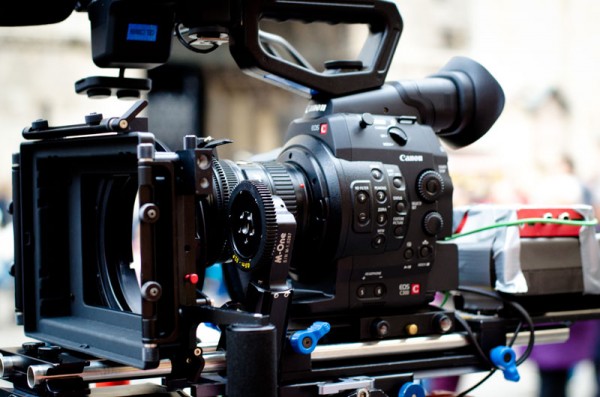
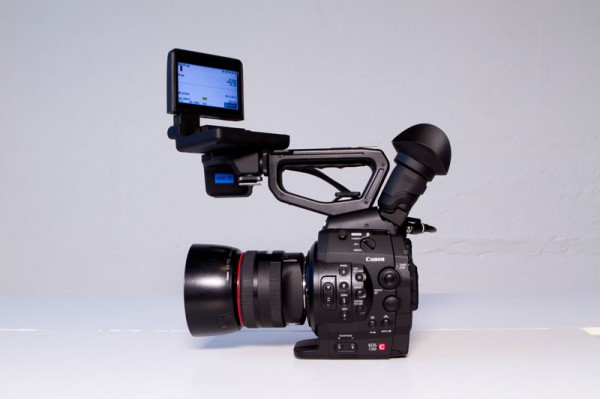
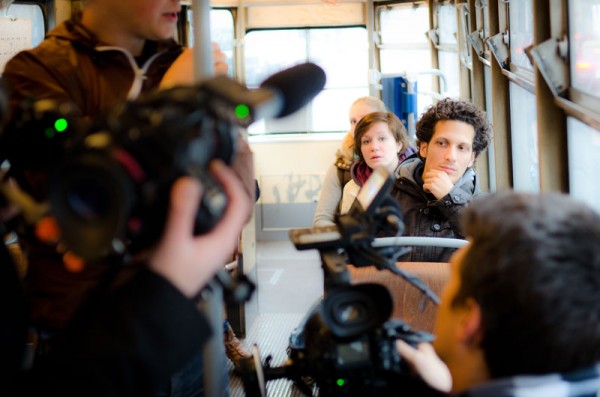
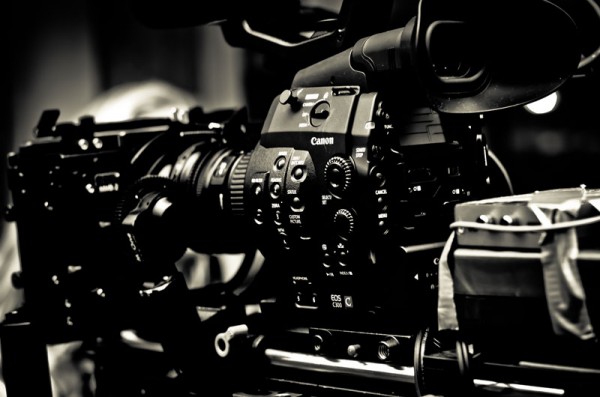

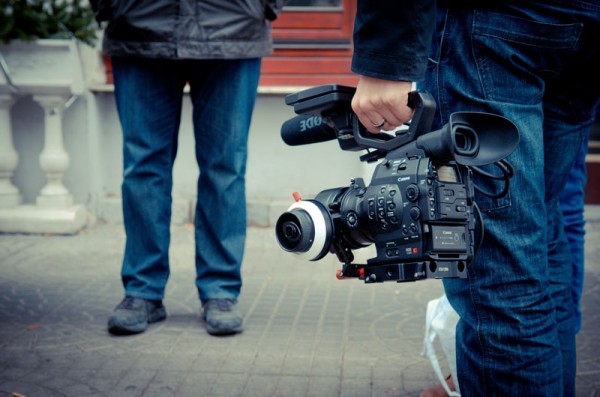
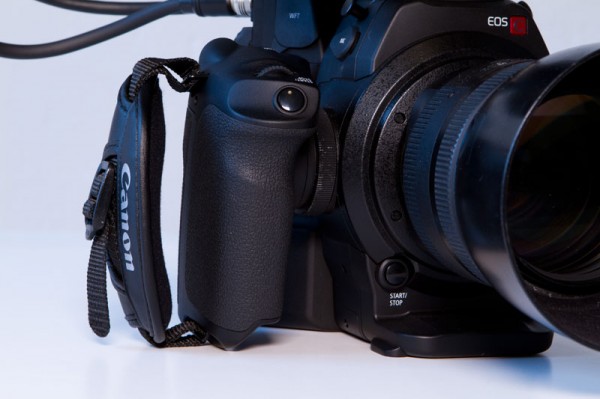
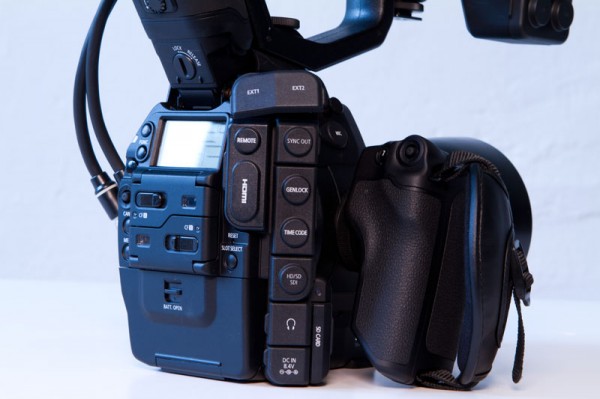
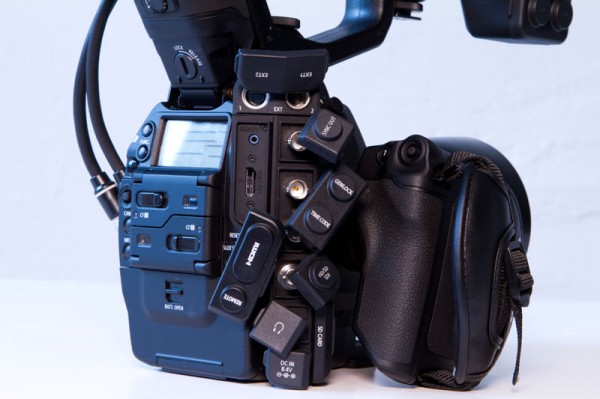
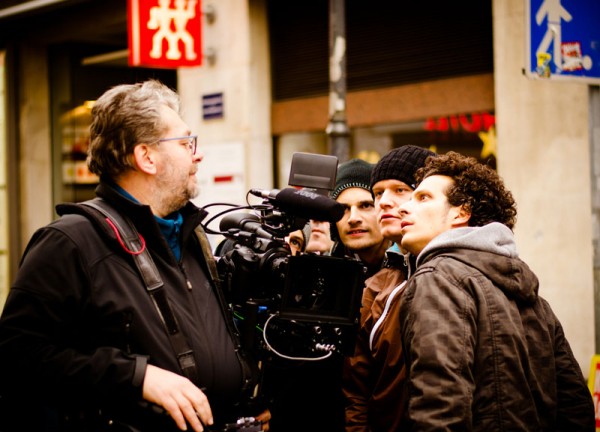
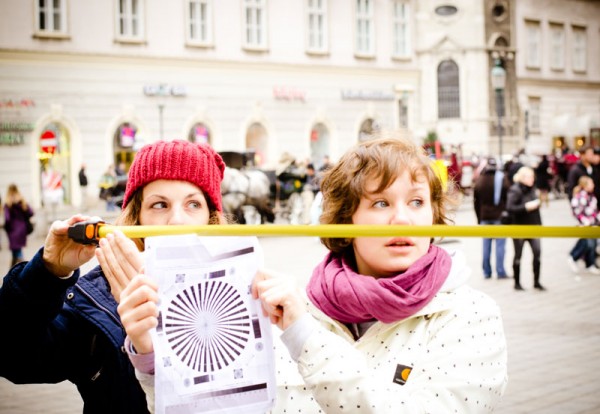
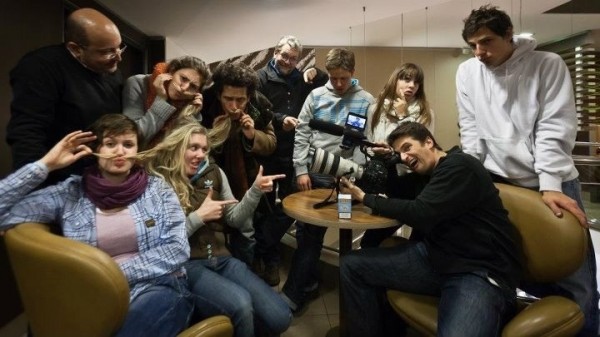
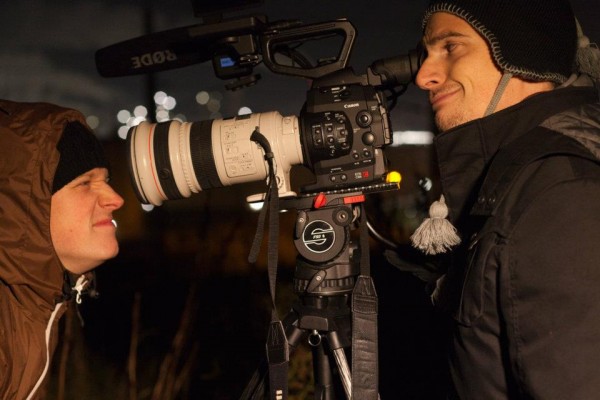

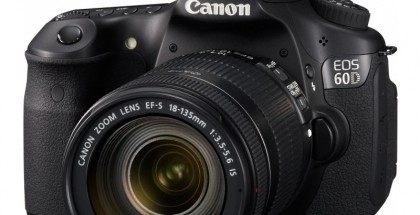
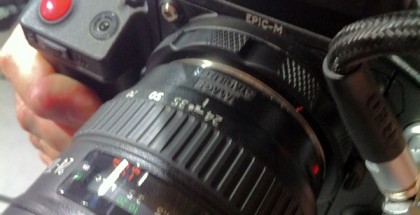

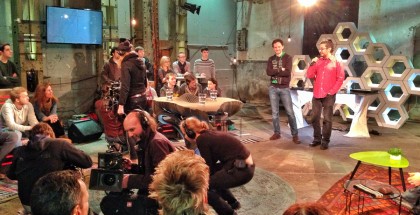


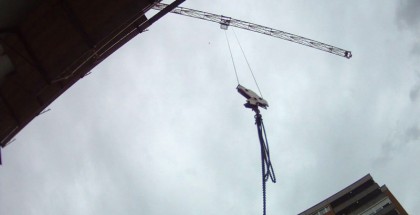












Comments